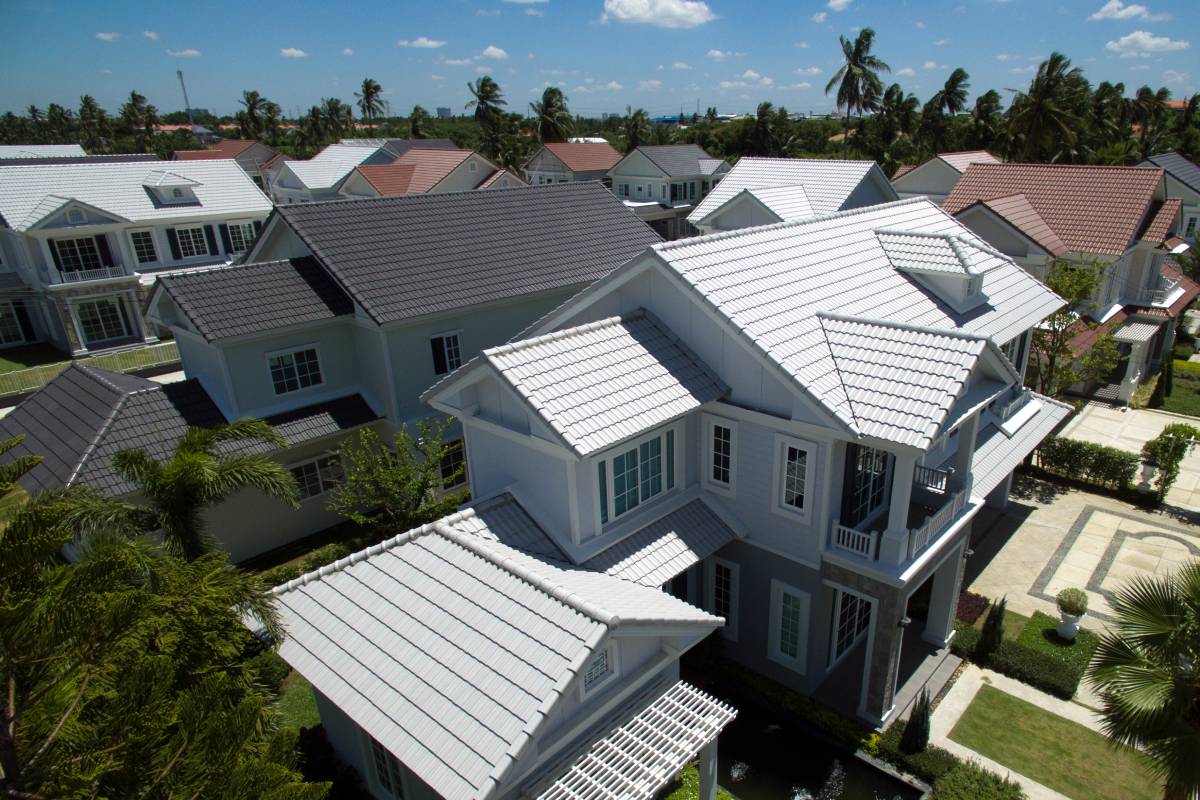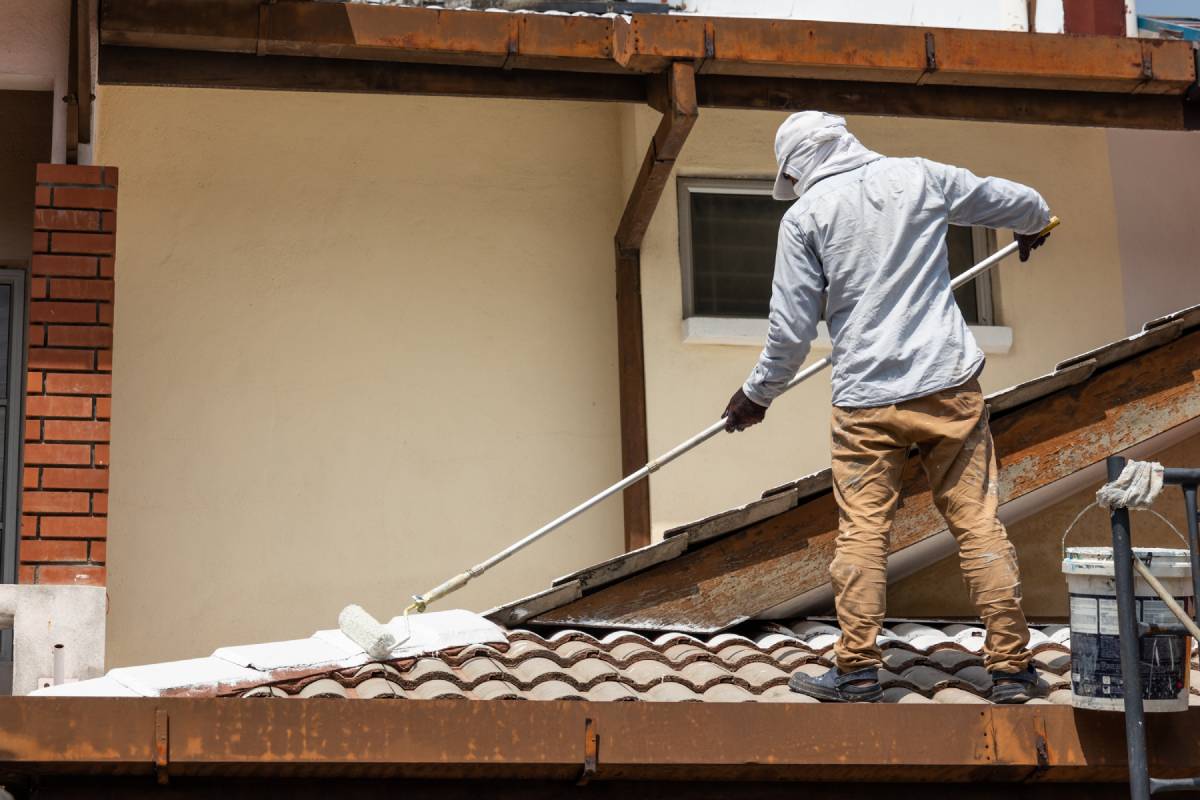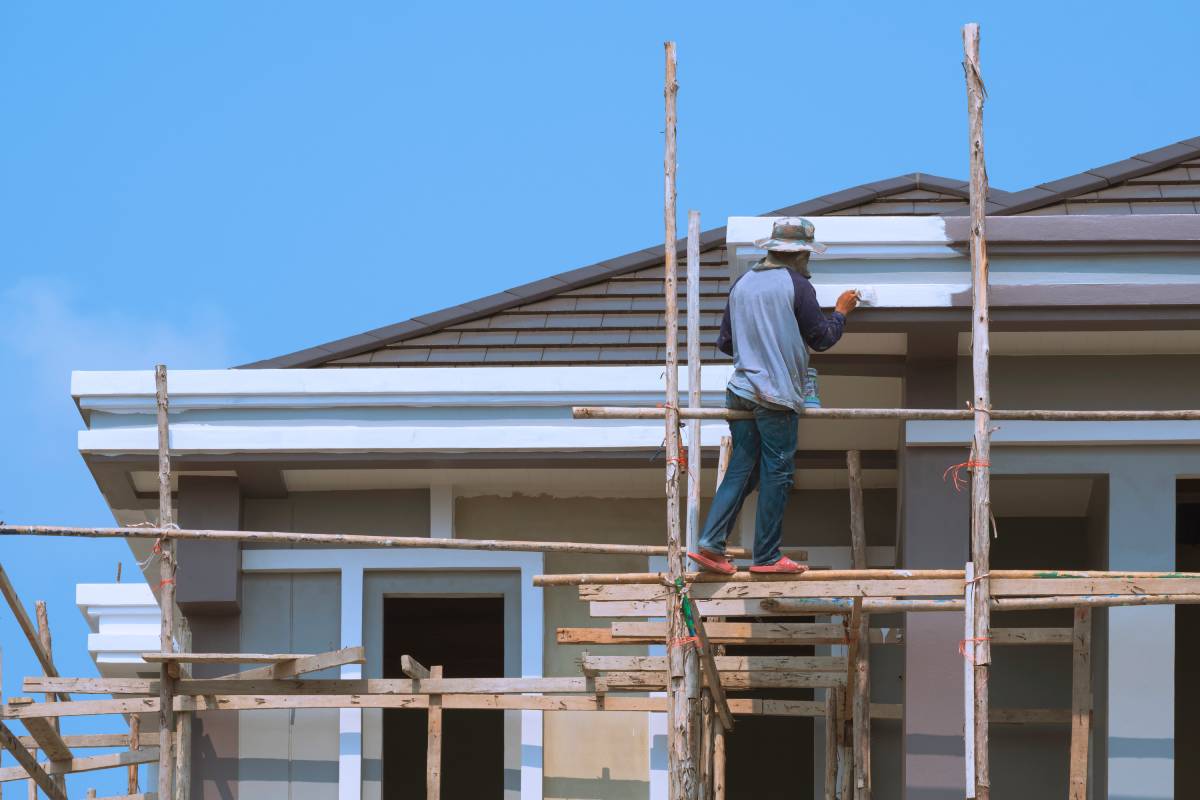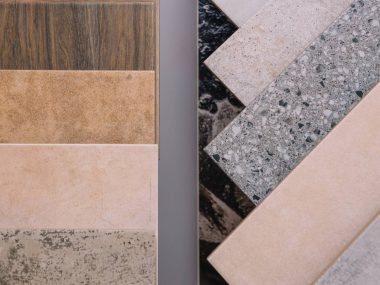No matter what your political beliefs are, one of the biggest problems we face as a society right now is the increasing heat. In places like India and Pakistan, temperatures can soar above 50 degrees Celsius. Just this year, there was a case where a road in central Victoria melted because of the heat.
We can’t control the outdoor heat, but when it comes to indoor temperatures, applying a special heat-reflective coating on your roof might be the key to making it more bearable.
This might sound like a simple solution, but heat-reflective paints are actually quite effective and have been widely used in the Australian outback. They can be a more affordable and environmentally friendly option compared to installing air conditioners, although they still come with a cost. To save money, make sure not to apply the paint too thickly, use devices to measure the thickness and apply only as much as needed.
You might be interested: Dealing with Wasp Nests: What You Should Know?

How Does Heat-Reflective Coatings Work?
Heat-reflective coatings are designed to bounce off most of the sun’s heat from your roof. While using plain white paint can achieve this, it’s not always a practical choice. White paint can be too reflective, potentially causing glare problems when there are taller buildings nearby. The reflection, even if it doesn’t produce heat, can be bothersome as it may shine into neighbouring building windows.
This reflection issue is also why buildings near airports often cannot have white roofs, as the glare can negatively affect pilots at certain angles. The solution is to use light colours that can reflect heat without causing glare for nearby occupants or pilots. However, these lighter colours can’t reflect heat as effectively as pure white.
Moreover, A study done at Stanford University shows that white roofs may increase, not decrease, the earth’s temperature. White roof membranes have high reflectivity that directs heat upward into the atmosphere and then mixes with black and brown soot particles, which are thought to contribute to global warming.
To address this, heat-reflective paint includes infrared and mixed metal oxide pigments, which are much better at reflecting the sun’s radiation, especially in the infrared spectrum where most of the sun’s energy is concentrated. While UV light is more damaging, it tends to dissipate in the atmosphere. This type of paint not only reflects heat but also dissipates any heat that manages to pass through into the roofing material, rather than allowing it to heat the interior space.
It’s important to understand that there are limitations to what heat-reflective paints can achieve. Simply adding more coats of paint won’t further reduce indoor temperatures and will only increase your expenses. Additionally, these paints may work against you during the winter, when heat becomes precious, and using heat-reflective coatings might lead you to rely more on space heaters.

The Pros of Heat-Reflective Paints
Heat-reflective paints may seem like a one-trick solution, but their impact goes beyond just keeping things cool. Firstly, they help protect your building by reducing the amount of heat it absorbs. This can extend the life of your roof materials and the paint itself, reducing the frequency of roof maintenance.
Another advantage is the potential for significant savings on your electricity bills. They can reduce your reliance on air conditioners, or at least limit their use to extremely hot days. While they may not be as financially rewarding as installing solar panels to generate electricity, heat-reflective paints are a more budget-friendly option.
It’s worth noting that some companies, like Dulux, have faced fines for making exaggerated claims about heat-reflective paints. However, the reality is that these paints do work. In India, for example, simply using white tarps on roofs can lower indoor temperatures by at least two degrees, and heat-reflective paints offer even more comprehensive benefits.

The Cons of Heat-Reflective Paints
There are several downsides to using heat-reflective paints. The primary drawback is that these paints tend to be somewhat more expensive than regular paints.
While the cost difference isn’t substantial, it’s essential to consider that standard white paint may not last as long on your roof compared to heat-resistant options.
Another issue is that, at best, heat-reflective roof paint can reduce energy expenses by about 15%.
While a 15% reduction is beneficial, it might not create a dramatic change in your bills.
It’s worth noting that there are limitations to how efficiently this paint can work. Remember that the sun is just one of several factors contributing to the warmth of your home.
Lastly, if you reside in an area with cold winters, heat-reflective paint might hinder snow melting from your roof. The added weight of accumulated snow over time can potentially harm flat roofs more than darker paint, which aids in snow melting.
That’s why some suggest that solar air conditioning might be a better overall choice than heat-reflective paint.
Final Thought
Heat-reflective paints offer valuable benefits by reducing heat absorption, potentially extending the life of your roof, and providing some energy savings. However, they can be slightly more expensive than regular paints and might not produce a significant decrease in energy costs. Additionally, they may not be as effective in extremely cold climates where snow accumulation is a concern.
While they have their advantages, it’s important to weigh the pros and cons and consider your specific circumstances to determine if heat-reflective paints are the right choice for your situation.






